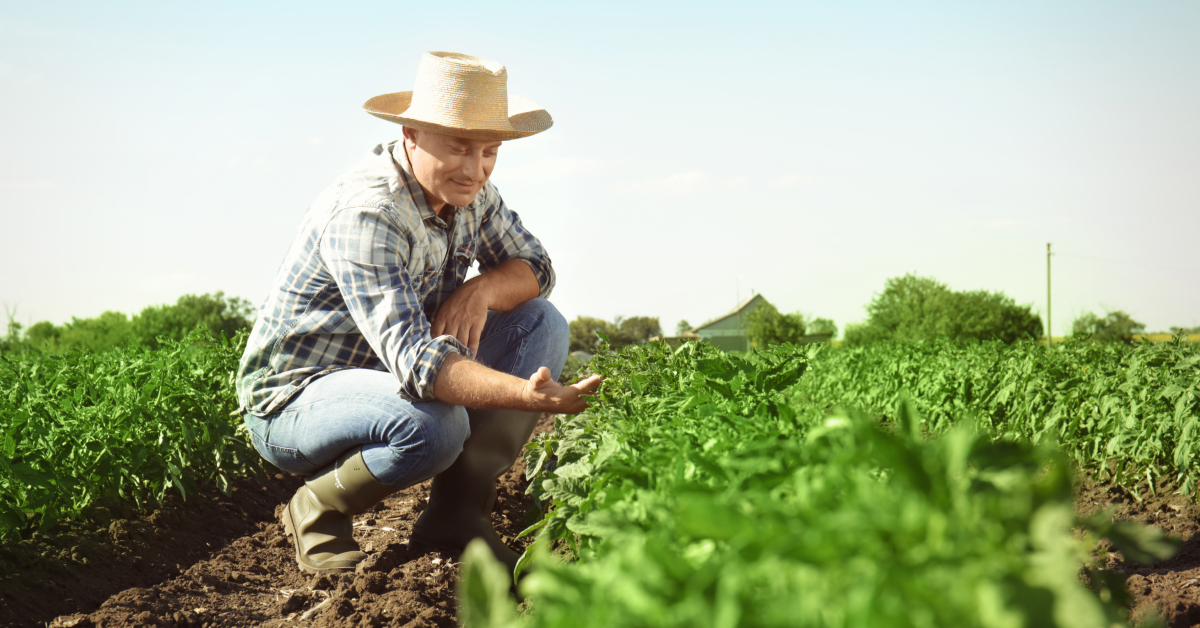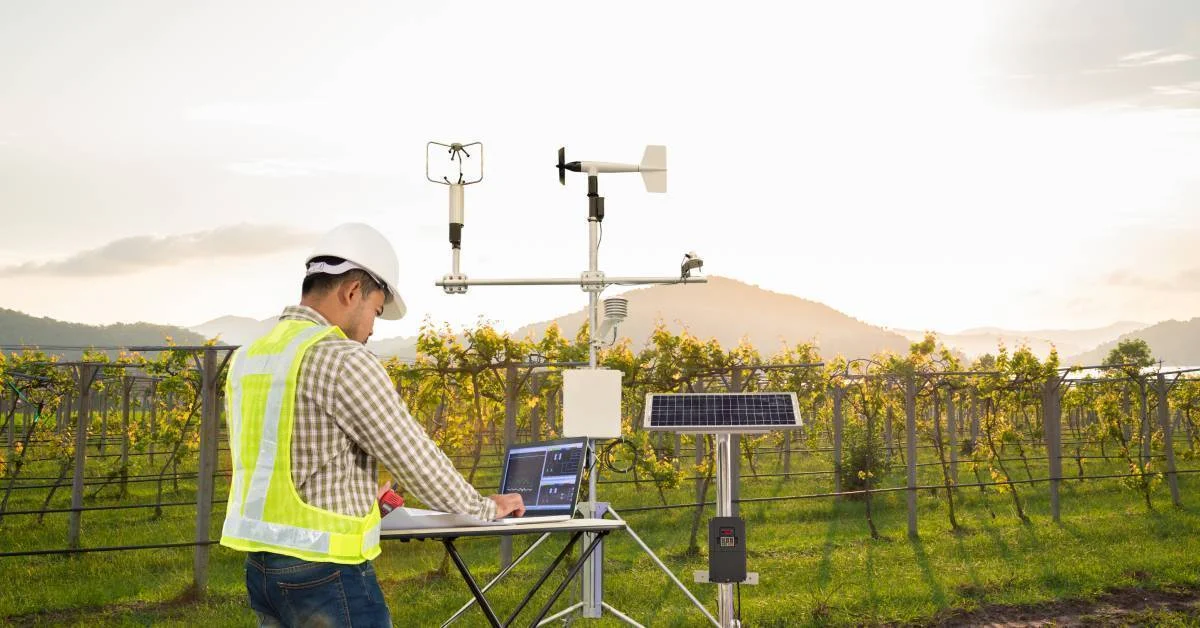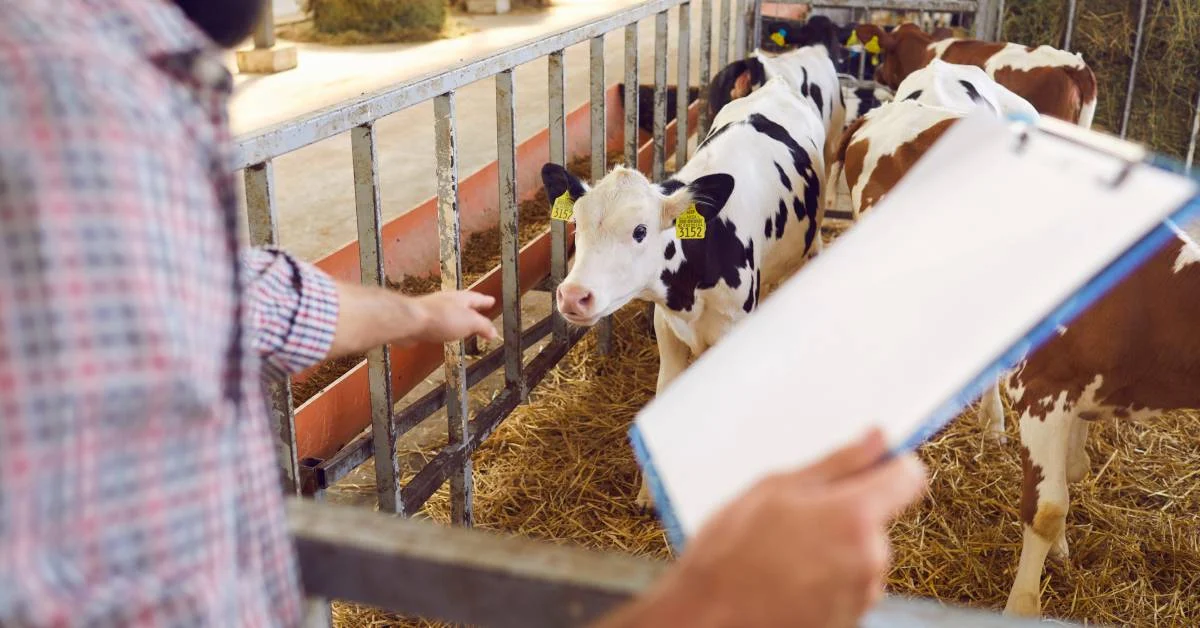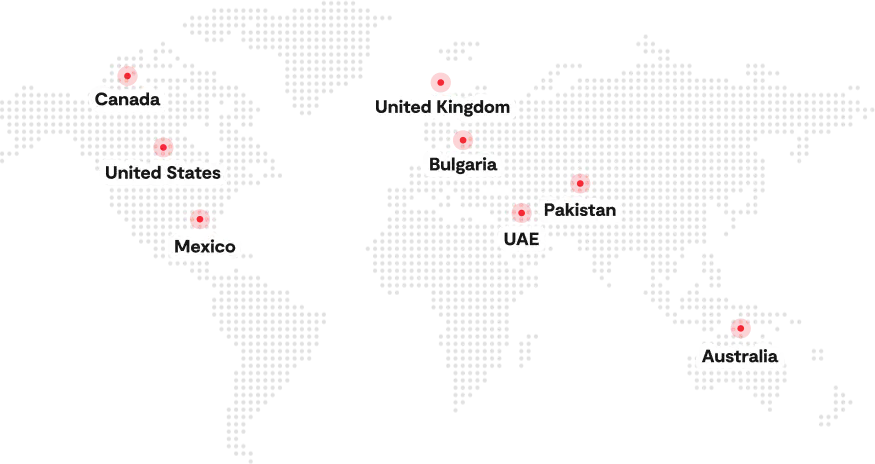Thinking of how to start farming but not sure where to begin? More and more people across the U.S. are making the transition to farming, and many of them don’t come from traditional farming backgrounds. This trend in agricultural sector highlights a growing opportunity. There’s never been a better time to dive in, especially if you’re passionate about working the land, raising animals, or providing fresh food to your community.
But farming isn’t just about owning land or investing in equipment. It’s a journey that demands careful planning, knowledge, and the right support. Whether you’re dreaming of cultivating organic vegetables on a small plot, raising livestock on open pastures, or starting a mixed operation, knowing the best way to farm from day one can help you avoid costly mistakes.
So, if you’ve ever wondered how to be a farmer, or are ready to take your first real steps toward how to start farming, this guide is for you.
Self-Assessment: Is Farming Right for You?
Before you dive into the soil, invest in land, or purchase your first livestock, take a step back and ask yourself a simple but important question: Is farming truly the right path for me?
Farming is more than just a job — it’s a lifestyle. Many new growers and ranchers are drawn to agriculture because of the freedom, connection to nature, and sense of purpose it brings. According to the USDA’s 2022 Census of Agriculture, over 900,000 U.S. Farms are operated by individuals with no prior family history in farming, indicating that more people from diverse backgrounds are choosing this career despite the challenges in the agricultural sector.
So what’s drawing them in?
For many, it’s the satisfaction of growing food with their own hands, the pride of contributing to local food systems, and the appeal of a more self-reliant life. Others are motivated by environmental stewardship or the desire to raise their families in a rural, grounded setting.
But while the rewards are real, so are the demands. Unpredictable weather, long hours, physical labor, and tight margins are part of the deal. If you’re someone who enjoys solving problems, working outdoors, and learning by doing, even when things don’t go as planned, farming may be a natural fit.
Here are a few honest questions to help guide your self-assessment before you figure out how to start farming:
- Are you comfortable with physical, hands-on work, often in challenging weather conditions?
- Can you manage risk and stay flexible when markets or seasons shift?
- Do you have (or are you willing to develop) basic skills in business, budgeting, and recordkeeping?
- Are you open to starting small and learning as you grow?
There’s no one-size-fits-all answer for how to get into farming, but one of the best ways to farm successfully is to start with a strong sense of why you’re doing it. Passion and purpose are your fuel when the going gets tough — and it will.
If you’re serious about becoming a farmer, this self-check isn’t meant to discourage you — quite the opposite. It’s the first step toward a career that can be meaningful, independent, and deeply rooted in community. For those exploring a career in agriculture, taking the time to assess your values, strengths, and long-term goals sets a solid foundation for success.
We’ll walk you through the practical steps of how to start farming, from choosing your farming focus to accessing beginner resources and support, in this hands-on farming guide built for new growers and ranchers like you.

Step 1: Research & Choose Your Farming Type
Once you’ve taken the time to reflect on whether farming is the right fit, it’s time to dig into one of the most important decisions you’ll make as a beginning grower or rancher: What kind of farm are you building?
When learning how to start farming, it’s easy to feel overwhelmed by all the options. Will you raise animals, grow vegetables, or try your hand at both? The best way to farm often depends on your location, resources, and what you are most passionate about.
Start by thinking about your region. What grows well in your climate and soil? What are the average rainfall patterns? Do you have sufficient access to pastureland and water sources for your livestock? These questions matter more than most people realize. For example, if you’re based in the Midwest, row crops or cattle might be ideal.
In contrast, a grower in a semi-arid area might opt for drought-tolerant crops or small-scale poultry operations. But that’s not all — the market matters too. Contact your local extension office, farmers’ markets, or nearby food co-ops to understand what’s already being sold and identify any potential gaps.
Some small-scale producers find success by filling niche markets, such as:
- Organic produce for health-conscious buyers.
- Pasture-raised poultry or beef for sustainable meat lovers.
- Hydroponic or vertical farms in urban or indoor environments.
Regenerative farming methods help restore soil health and maintain a carbon balance.
Step 2: Create a Realistic Business Plan
Starting a farm without a plan is like planting seeds without checking the soil — it might work, but the odds are against you. A solid business plan for starting a farm helps you turn your farming vision into a sustainable and profitable enterprise. Here’s how you can create a realistic business plan when you are in the process of how to start farming:
- Define your mission: Clarify your purpose — are you growing food for your local community, raising livestock, or running a niche operation like organic herbs or pasture-raised eggs?
- Understand your market: Identify who will buy your products and what the demand looks like in your area.
- Set margin expectations: Estimate your pricing, costs, and potential profits to ensure your farm can be financially sustainable.
- Plan for key resources: Outline what you’ll need — capital, labor (even if it’s just you), equipment, and infrastructure.
- Create a seasonal timeline: Estimate the time required to prepare, plant, harvest, and sell your produce.
- Forecast your yield: Use local data or extension services to estimate what your farm can realistically produce in your first season.
- Budget wisely: Track expected expenses (e.g., seeds, feed, fencing, tools) and potential income. Leave room for emergencies.
- Explore funding options, including beginner-friendly grants, USDA microloans, and local partnerships, to support your startup costs.
- Think long-term: A good business plan sets goals for your first season — and beyond. This is key for becoming a farmer with staying power.
Every farm is different, and so is every plan. If you’re not sure where to begin or how to structure, a business plan writer can help you shape your ideas and offer clarity without overcomplicating things.
Step 3: Find and Secure Land
Choosing the right land is crucial when learning how to start farming. Prioritize soil quality, reliable water access, and proximity to local markets. Leasing is often a smart option for new growers, offering flexibility and lower upfront costs, while ownership provides long-term control.
Small-scale growers can also explore urban farming, greenhouse farming setups, or shared plots, especially in suburban or city areas where land is limited. Government programs, such as the USDA’s FSA and land link initiatives, help beginners enter agriculture by offering funding and land access opportunities. Whether you’re focused on crops, livestock, or mixed farming, the land you choose lays the groundwork for success, making it one of the best ways to farm smart from day one.
Step 4: Get Legal, Licensed, and Insured
As you move from vision to reality, making your farm legal is a crucial step. While it may not be as exciting as planting your first seed or building a coop, a proper legal setup protects your work and opens doors to funding, markets, and growth opportunities. If you’re serious about becoming a farmer, don’t skip this step — it’s one of the best ways to farm smart from the start.
Here’s what to consider:
- Choose a legal structure: Decide whether you’ll operate as a sole proprietorship, partnership, LLC, or cooperative. Each has different implications for taxes, liability, and paperwork.
- Apply for permits and licenses: These requirements vary by state and the type of product you plan to grow or sell, such as produce, eggs, meat, or nursery plants. Always check with your state’s Department of Agriculture.
- Get liability insurance: Protect yourself in case of injury, property damage, or product-related claims. Even small operations need coverage.
- Understand crop and livestock insurance: USDA programs, such as the Non-Insured Crop Disaster Assistance Program (NAP), help new growers manage risk, especially in unpredictable weather conditions.
- Register for taxes and banking: You’ll likely need a federal EIN for farm tax reporting, farm and personal loans, and opening a business bank account.
- Check local zoning and land use laws: Especially important if you’re farming in urban or suburban areas.
Step 5: Set Up Infrastructure
Setting up your farm’s infrastructure is the next big step after securing land and legalizing your business. Whether you’re raising livestock, planting crops, or a combination of both, your infrastructure must support your daily tasks and long-term growth. It’s not just about how to start farming, but setting up the systems that will help you manage it all efficiently. Consider everything from barns and irrigation systems to storage for crops and equipment.
Here’s how to approach it:
- Housing & Fencing: Set up barns or coops and secure fencing to protect livestock and crops.
- Irrigation: Install an efficient irrigation system, like drip irrigation, for consistent crop hydration.
- Storage & Tools: Create storage for crops, feed, and equipment, and invest in the tools that suit your scale.
- Beginner-Friendly Tools vs. Long-Term Investments: Start with basic, affordable tools and scale up as your farm grows.
- Tech Stack for Monitoring and Planning: Utilize farm management software, such as Folio3 AgTech’s Crop Management Software, to organize planting schedules and track progress.
Step 6: Start Small and Scale Strategically
When starting a farm, it’s wise to take an MVP (Minimum Viable Product) approach. Begin with a test plot or a small herd to minimize risk and get a feel for the processes involved. Focus on your first-year goals: learn the growth cycles, track your progress, and avoid incurring significant debt.
Document everything for future reference and improvement. This approach will also provide you with valuable data from the outset. Tracking data—such as planting schedules, input use, and yield—is crucial, and Folio3 AgTech’s tools can help you maintain precision from the start. Additionally, seek mentorship from local co-ops, community gardens, or apprenticeships to gain practical knowledge and connect with others who are walking the same path.
Step 7: Understand Marketing & Sales Channels
Once your farm is up and running, it’s time to consider how you’ll sell your produce or products. Direct-to-consumer options, such as farmers’ markets, CSAs, and subscription boxes, allow you to connect with local buyers and build a loyal customer base. Some producers also create value-added products, for example, using a fresh produce ERP to turn their fresh fruits or vegetables into juices sold at local events or via online shops. You can also sell through wholesale channels, such as restaurants, grocery stores, and co-ops. Modern sales strategies are also being shaped by technology, with AI in presales helping businesses predict customer needs, personalize offers, and streamline outreach.
Today, social media and ecommerce are powerful tools to expand your reach. Share your farm story, show your process, and engage customers online. Use seasonal marketing cycles to align your products with market demand, ensuring steady sales throughout the year. As a new farmer, finding the right marketing channels can make all the difference in how to start farming successfully.
Step 8: Track, Improve & Automate
Continuous improvement is key to farm success, and tracking data is essential for growth. Log important information daily, including soil moisture, plant health, and any pest outbreaks. This will help you identify patterns and make more informed decisions. Regularly evaluate your return on investment (ROI) each season to ensure profitability.
When considering how to start farming, it is crucial to prioritize data tracking from the outset. Folio3 AgTech supports this process by offering data dashboards that help track performance, plan crop rotation, and monitor inventory levels. Automation tools, such as those for scheduling and input tracking, can enhance your workflow efficiency.
By tracking progress and fine-tuning your approach each year, you will continuously improve yields and optimize your farming operation, ultimately transforming your farm into a sustainable business.
Common Mistakes New Farmers Make (And How to Avoid Them)
Starting a farming venture comes with its own set of challenges, and new farmers often make a few common mistakes that can derail their progress. By being aware of these pitfalls and taking the right steps, you can avoid costly errors and set your farm up for success as you learn how to start farming.
Starting Too Big
Many aspiring farmers are enthusiastic and dive into large-scale operations right away. However, starting small and scaling gradually is often the best approach when learning how to start farming. Trying to manage a vast farm without the necessary experience can lead to overwhelm and financial strain. Begin with a manageable size, like a test plot or a small herd, to gain hands-on experience before expanding.
Ignoring the Market
It’s easy to get caught up in the excitement of farming, but understanding your target market is crucial when determining how to start farming. Farmers who fail to assess local demand for their products often struggle to sell their products. Before starting, research the crops or livestock in demand in your area and determine how you can meet that need. This ensures that your efforts align with market realities, helping you avoid unnecessary losses.
Neglecting Record-Keeping
Failing to maintain proper records is one of the most common mistakes made by new farmers. Keeping track of crop yields, labor, expenses, and sales will give you valuable insights into what works and what doesn’t as you learn how to start farming. Implementing a solid record-keeping system from the outset will enable you to monitor growth, make informed decisions, and enhance efficiency. Digital tools or farm management software can help organize this data for future reference.
Underestimating Weather Risks
Farmers face the risk of unpredictable weather conditions, from droughts to floods. Not having a backup plan or insurance to safeguard your crops and livestock against extreme weather events can result in significant losses. Always factor in potential weather risks when planning to start farming, and explore options such as crop insurance or diversifying your farm to minimize damage from unexpected climate changes.
Avoiding Technology
The farming industry is increasingly becoming more tech-savvy. Farmers who resist adopting new technologies miss out on valuable tools that can help them streamline operations, optimize yields, and track progress when figuring out how to start farming. Utilizing farm management software or data analysis tools, such as Folio3 AgTech’s Crop Management Software, can help automate processes, monitor crops, and ensure more efficient use of resources. This can ultimately save time and money while improving farm performance.
Conclusion
Starting a farming journey can be rewarding, but it requires careful planning, learning, and avoiding common mistakes. By starting small, understanding your market, keeping accurate records, preparing for weather risks, and embracing technology, new farmers can set themselves up for success.
For efficient farm management and seamless tracking, consider using Folio3 AgTech’s Crop Management Software. With tools to monitor inputs, plan schedules, and track yields, Folio3 AgTech helps farmers optimize operations, improve agricultural productivity and grow their business effectively.
FAQs
What Is The Easiest Farm To Start?
Small-scale vegetable farming or poultry farming is often considered the easiest to start due to lower initial investment and space requirements. Focus on crops or livestock suited to your climate and local market.
Which Farming Is Most Profitable?
Most profitable crops are organic vegetables, herbs, or niche livestock farming (e.g., grass-fed beef), tend to be more profitable due to higher market demand and premium pricing.
How To Farm Step By Step?
Begin by researching your farming type, creating a business plan, securing land, establishing infrastructure, and implementing effective marketing strategies. Don’t forget to track your progress and continuously improve.
What To Do Before Farming?
Before starting a farming operation, research the most suitable type of farming for your area, develop a business plan, secure land, ensure compliance with legal and insurance requirements, and prepare for potential risks such as weather fluctuations or market changes.
How Do You Plan A Farm?
Planning a farm involves defining your farming goals, selecting the right crops or livestock, analyzing the market, preparing land, creating a budget, and setting timelines for planting, harvesting, and sales.
What Is The Best Agriculture Business To Start?
The best agriculture business to start depends on your interests, location, and market demand. Options such as organic farming, greenhouse farming, or agro-processing often yield good returns, driven by growing consumer interest.







